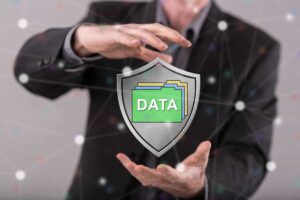Cybersecurity is a major concern for individuals and businesses today. Biometrics can help to mitigate these risks by identifying individuals based on their unique physical characteristics, like their face or fingerprint. This is in contrast to passwords which can be guessed or stolen. Biometrics are used in many places, such as airports, bank accounts, and phone unlock features. Implementing biometrics helps us keep our personal information safe from those who would use our identity for fraudulent or other nefarious purposes.
What Are Biometrics?
Biometrics are individual biological elements that can verify an individual’s identity. Examples include fingerprints, iris scans, facial recognition, and voice recognition. Biometric systems are becoming increasingly popular in information security due to their accuracy and ease of use. They offer a more reliable alternative to traditional authentication methods such as passwords, PINs, and other forms of identification based on personal details.
Importance of Biometrics for Cybersecurity
Biometrics can be used to authenticate a user. The data collected from biometrics is unique to the individual and cannot be replicated, which makes it more difficult for someone to commit fraud. Cybercriminals will not be able to easily access your biometric data, so this form of authentication is a good way to prevent fraud in the digital world. If you want someone else’s fingerprint or retina scan, you will have to steal it from them without them knowing, which is very difficult. Once a user has been authenticated successfully, biometrics can also help identify them in future requests. For example, if an account has been associated with biometric data such as fingerprints and voiceprints, all future requests will require these same specific identifiers. Your account will still need a password, so ensure that you are still using a secure password in combination with biometric verification.
How Biometrics Work
Biometrics is the automated recognition of a person based on physical or behavioral characteristics. The term “biometric” has been used to refer to any method for recognizing individuals, including fingerprints and facial recognition systems. Still, it has also been used in specific technologies like iris scans and voiceprints. Biometric systems use sensors to capture and analyze a person’s physical and behavioral characteristics. For example, an optical device may measure the shape of your eye; an electrical sensor could detect how much heat rises from your finger when pressed against it.
Benefits of Biometric Identification
Biometric verification is more secure than traditional methods because it uses unique physical characteristics, like your fingerprint or iris, to confirm your identity. This makes it difficult for someone else to steal your identity and use it for criminal purposes. They are unique to each individual and cannot be stolen, shared, or guessed. Moreover, they also cannot be copied or hacked with the use of a fake finger or retina. Verification is compatible with other forms of security. Many organizations already use a combination of multiple forms of identification and authorization to protect their data, including passwords, certificates, keys, or physical tokens.
IT Company in Austin TX
In conclusion, biometric verification is a reliable and effective way to increase small business cybersecurity for business in San Marcos. When additional security is needed, biometric verification can be an excellent solution. With its proven track record, biometric verification is a smart choice for businesses looking to improve their security posture. If you are looking for San Marcos cybersecurity services, TekRescue is here to help you with all the tech details.



